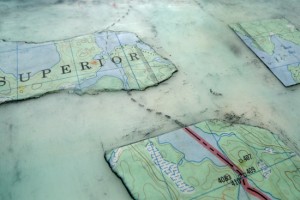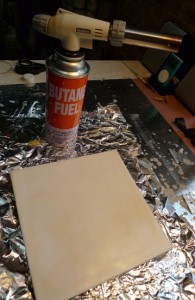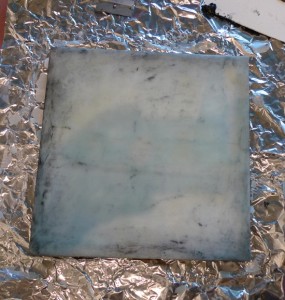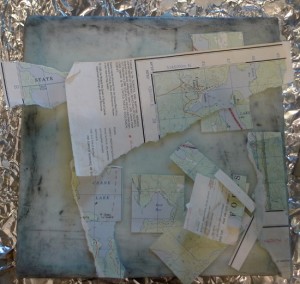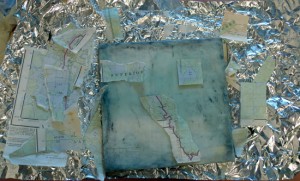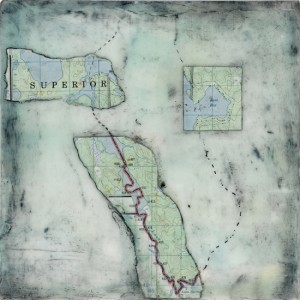Art & Culture, Maikes Marvels Creations
Community Cartography exhibit opens tonight
Chicago Artists Month is bustling with activities and exhibits. In addition to having my Malachites at The Buzz and Migrant Danaus at Dick Blick Evanston, the Arts of Life-affiliated Kinzie Corridor Gallery is hosting my Superior beeswax collage this month.
Exhibiting artists also include:
- Olivia Arduini
- Amy Babinec
- Kelli Becker
- Samantha Buchanan
- Caitlin Law
- Jim Newberry
- Sam Perkins-Harbin
- Alex Scott
- Tim Stone
Art Block by Block is this year’s Chicago Artist Month theme, and it explores the impact of Chicago-based artists on the city’s neighborhoods.
“Chicago Artists Month 2012 will examine how visual artists enhance Chicago’s cultural landscape and make each neighborhood unique. Chicago’s artists are active citizens: contributing to civic dialogue; strengthening the fabric of our neighborhoods; inspiring conversations that address the concerns of our communities.â€
~ Chicago Department of Cultural Affairs and Special EventsÂ
I made Superior during Shawna Moore’s workshop, with a map from the workshop stash. It was fun to discuss the layout and colors with workshop participants. The process involved layering tinted beeswax on a board, then adding texture with markmaking and oil paint, and fusing on the map pieces. After this, I used carbon paper to mark out a little path linking the paper pieces together.
The Arts of Life artists have created a centerpiece to compliment the Block by Block theme. Through a special project led by Caitlin Law, Alex Scott, and Tim Stone The Arts of Life team created a neighborhood map that celebrates community connections in the Kinzie Corridor neighborhood.
Community Cartography opens today, October 5 from 6 p.m. to 10 p.m. with a reception featuring music from About A Girl, and Home Body, and an Open Mic. Kinzie Corridor Community Gallery is located at 2010 West Carroll Ave., Chicago, Illinois. The exhibit will remain up through November 23, with visiting hours from 9 to 4 on weekdays or by appointment.
I’ve got several books on the history of mapmaking, and eagerly absorb the map exhibits put on by local museums. Maps and cartography reflect mankind’s quest for developing knowledge and carving a path in life. Indicative of how a group of people perceives itself in relation to others, cartography reflects the contemporary world-view pictorially, linguistically, and politically.
In modern times, we rely more and more on real-time maps to show us where to go, and get irritated when a change is not reflected on our “instant†gadget. By tearing up a map or defying that GPS-voice, we deviate from the prescribed route, and create a path of our own, whether just symbolically or in life.
“Maps can be simple tools, comfortable in their familiar form.
Or they can lead to different destinations:
places turned upside down or inside out,
territories riddled with marks understood only by their maker,
realms connected more to the interior mind
than to the exterior world.
These are the places of artists’ maps,
that happy combination of information and illusion
that flourishes in basement studios and downtown galleries alike.â€
~Â Katharine Harmon, author of You Are Here:
Personal Geographies and Other Maps of the ImaginationÂ

